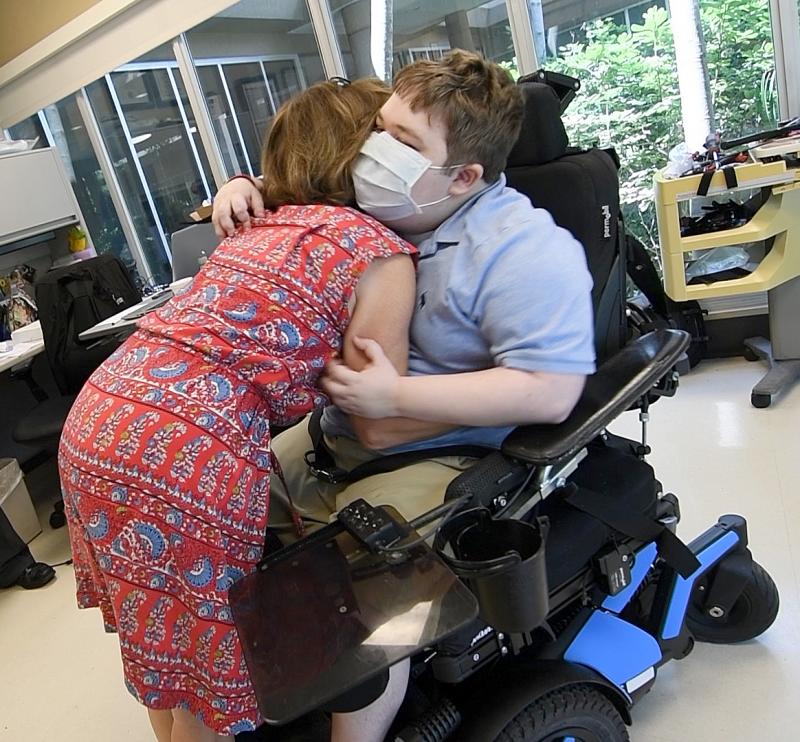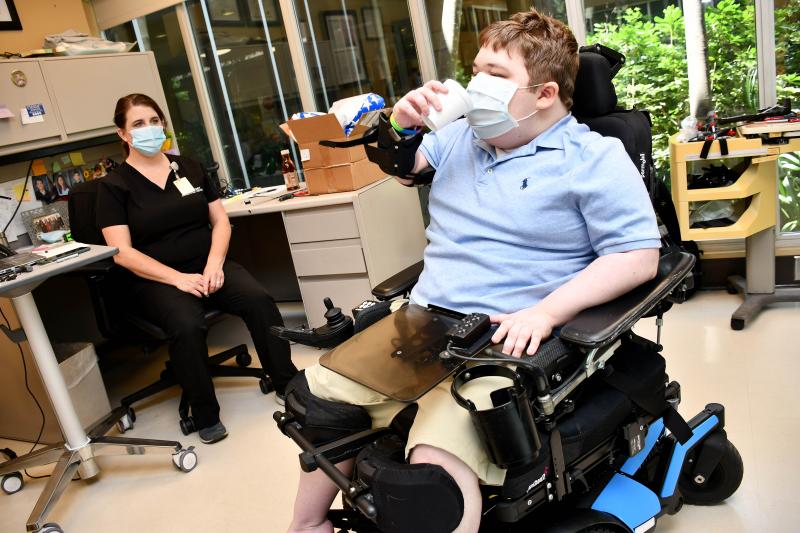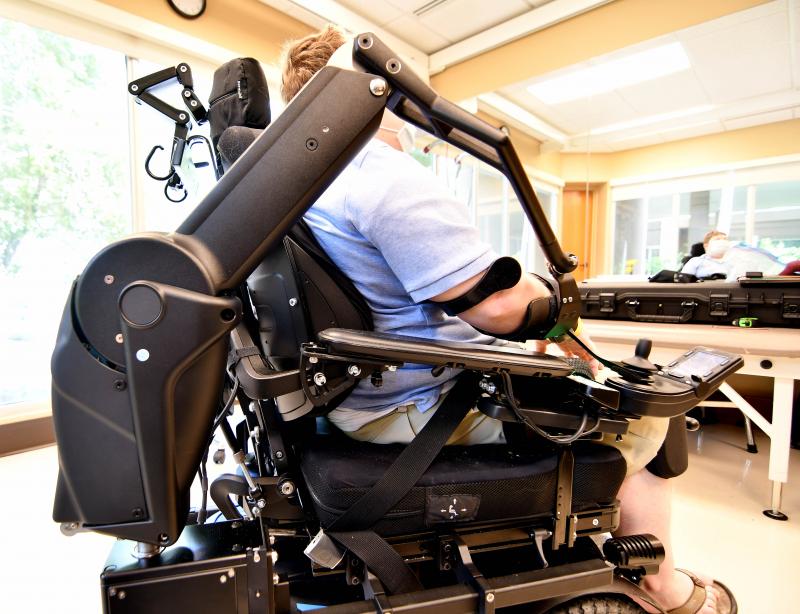When Angela Malone asked for a hug the other day, her son, Adam, could only say, “Mom, you know I can’t.”
After muscular dystrophy severely weakened his right arm, the 19-year-old didn’t have the strength for a full embrace.
But mother and son recently managed an emotional clinch thanks to a device now available at Methodist Rehabilitation Center’s Assistive Technology Clinic in Flowood.
Known as the Kinova O540, the device attaches to Adam’s power wheelchair and provides dynamic mobile arm support for everything from hugs to mealtime tasks.
“It’s been helping me a whole lot,” Adam said. “Especially with eating–picking up utensils, feeding myself, holding drinks.”
Heather Maloney, a seating and mobility specialist at the Flowood clinic, has been providing mobility solutions for Adam for five years. She customized the power wheelchair he began to use when he became unable to walk at age 15.
“Heather’s done a lot for me,” Adam said. “Ever since then, she’s been there for every little thing I needed. Making adjustments to my chair, adding new attachments. She’s done a lot of good things.”
But it was Adam and his mother who introduced Maloney to this new technology.
“We saw it at a muscular dystrophy conference a couple years ago, and thought it was something we’d want but weren’t really sure if I needed it,” Adam said. “But as it got harder for me to feed myself, especially foods like soups and pastas, we knew it would be a good thing to use.”
“So I researched the device and I connected with Kinova,” Maloney said. “Adam had been having more difficulty with his hands. He was unable to brush his teeth and feed himself as well as any teenager would want to be able to do while out and about. And with him starting college, it was a way to increase his independence and quality of life.”
Because the Kinova is such a specialized device, it requires hands-on trials and fitting sessions. That’s where Kelsy Murman, a product specialist for Kinova, comes in.
“I discuss with the individual their goals in what they would like to achieve when using the device,” she said. “During the trial, I always like to have the individual try tasks that they would complete in their daily life as well as tasks that are meaningful to them.”
Though Kinova’s headquarters are in Montreal, Canada, Murman is based out of Oklahoma to serve the southeastern U.S.
“First, she flew down to Jackson and provided a demonstration for us at the clinic,” Maloney said. “Then she did an evaluation with Adam. We had to make sure that before we asked for the device that he could actually utilize it. But he picked it up immediately with no trouble whatsoever.”
Devices like the Kinova are a relatively new frontier in mobility technology.
“For years, lower extremity functional loss had been addressed with power mobility like power wheelchairs, but there wasn't the technology yet to address upper extremity functional loss,” Murman said. “So now individuals can not only get from point A to point B with their power wheelchair, but once they reach their destination, they are able to function in their environment using these tasks. It’s very empowering.”
Maloney agrees.
“It’s the little things, you know?” Maloney said. “At the very first trial Adam was able to grab a cup and lift it up to his mouth, and even scratch an itch on his head. Things he hadn’t been able to do for a while. What may seem like a little thing to some is actually huge for him.”
Murman is a licensed occupational therapist, so she was able to quickly establish a connection with Maloney.
“The therapists are the ones who work with the individuals on a consistent basis and are very involved in their daily lives, so their knowledge and expertise is very helpful when trialing the device,” Murman said. “Heather has been wonderful to work with and is very passionate about her work and providing her patients with technology that will give them the greatest amount of independence.”
The device is detachable from Adam’s wheelchair and has its own carrying case for safe storage when it’s not needed or during travel. And now that Adam is back to taking classes at Hinds Community College, he can’t wait to see what else the Kinova can help him do.
“I’m going to try it with other activities to see what it can do. I’m not sure what yet, but we will find something, I’m sure,” Adam said.
As Maloney said, it’s the little things. Like giving mom a hug.
“Watching Adam be able to hug his mom with his right upper extremity for the first time in a long time after installing it on his chair was one of the best moments I've had in my occupation,” Murman said.



